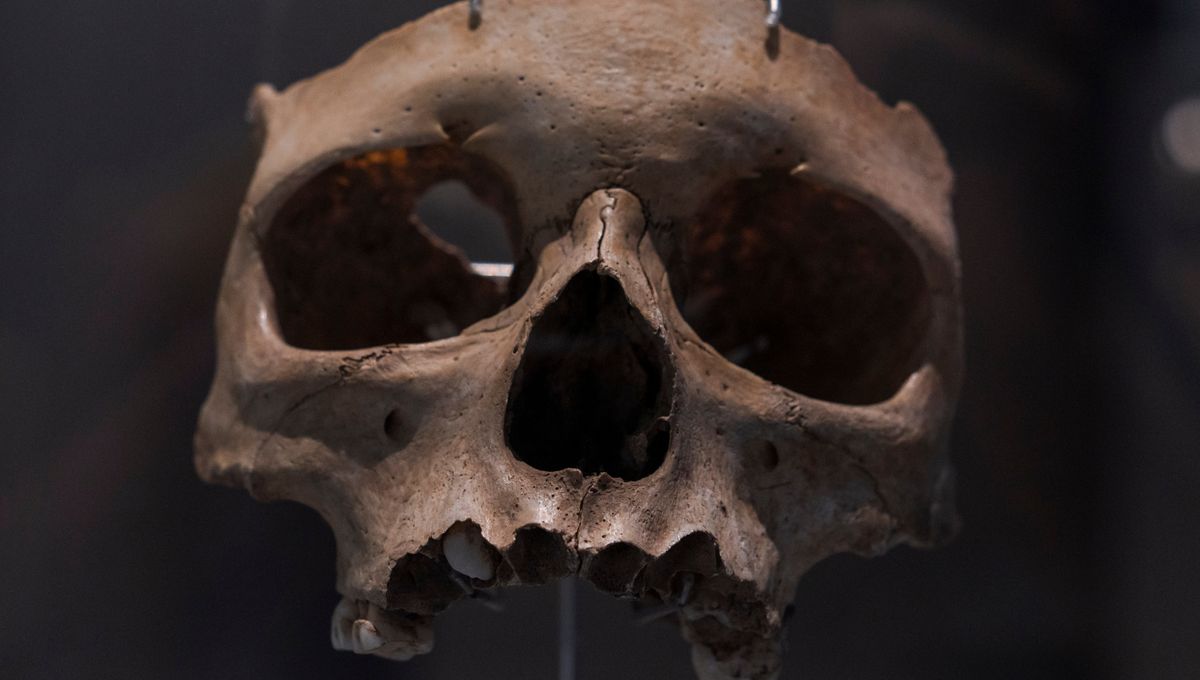
A team of international researchers has found conclusive evidence of something a little grim: human communities in the Magdalenian era – around 18,000 years ago – practiced cannibalism, even going so far as to snack on human brains. The research offered valuable new insights into the mortuary and ritual practices of this period in ancient human history.
ADVERTISEMENT GO AD FREE
Our understanding of how hunter-gatherers of Upper Palaeolithic Europe navigated death is somewhat limited due to just how rare their assemblages are in the archaeological records. However, some well-preserved examples have helped tell us how Magdalenian funerary activities and practices worked.
Skeletal remains have been recovered and in some cases, the position of bodies can be assessed for information. In some contexts, bodies have been covered in ochre and surrounded by grave goods, but sometimes these bodies are missing bones which was thought to be the result of scavenging animals. Alternatively, it is possible some bones were collected by the Magdalenian people as potential relics.
But the frequency of these missing bones, as well the appearance of disarticulated and unconnected body parts in other contemporary assemblages suggests something more was going on. Or to put it another way, body parts were potentially being deliberately selected by people for some reason.
It is known that the Magdalenian group used human bones for raw materials, sometimes making skull cups and jewelry. Among these specimens, the evidence of cut marks or even engravings are numerous; in France alone, cut marks have appeared on 93 Magdalenian individuals. This is about 40 percent of specimens calculated for this period in this region.
So what’s going on here? Well, scholars are torn on how to interpret these clear signs of “human-induced modifications” in the remains from this time. One side of the debate argues that the cut marks on the bones could be evidence of perimortem (conducted near or around the time of death) bone cleaning. On the other side, however, some believe these activities are signs of meat being prepared for consumption.
This debate has been playing out in academia for some time, but a new study has added weight to the latter interpretation. In it, an international team of researchers analyzed human bones located at the Maszycha Cave in Poland, a site that was first discovered in the 19th century and contained various stone tools and the remains of both animals and humans.
ADVERTISEMENT GO AD FREE
During the 1990s, researchers suggested that the skulls found in the assemblages at Maszycha Cave showed evidence of cannibalism. But later research rejected this suggestion arguing that the skulls did not display tooth marks, nor did they exhibit any signs of cultural modification.
None of these previous analyses used modern techniques in their assessments, which is where the new study comes into play. Now researchers have re-examined earlier data and added new evidence to the debate, putting cannibalism back on the menu.
According to a translated statement from the Catalan Institute of Human Paleoecology and Social Evolution, the researchers examined 63 human bone fragments “including skulls and long limb bones” using advanced 3D microscopy techniques. This approach allowed them to identify marks deliberately produced by humans, as opposed to occurring from natural processes.
Among this evidence are cut marks and fractures that are in keeping with consumption preparations. For instance, there are clear signs of the removal of “muscle packets, brain, and marrow.”
ADVERTISEMENT GO AD FREE
“The location and frequency of the cut marks and the intentional fracturing of the skeleton clearly show a nutritional exploitation of the bodies, ruling out the hypothesis of a funerary treatment without consumption,” lead author Francesc Marginedas says in the statement.
The team believes the bodies were processed for their meat soon after their deaths to avoid decomposition. In particular, the skull has cuts indicating the removal of the scalp and flesh, while fractures in the bone come from attempts to remove the brain – a rich source of nutrients. At the same time, humerus and femur bones have precision fractures to get at their marrow, another source of fats and calories.
Overall, the evidence shows the systematic manipulation of these human remains for consumption, where those who ate them prioritized the most nutritious parts.
“Cannibalism is a behavior documented at various times in human evolution,” Dr Palmira Saladié, co-author of the study, added. “In prehistoric contexts, it could respond to both survival needs and ritual practices or even dynamics of intergroup violence.”
ADVERTISEMENT GO AD FREE
It is possible that these cannibalistic practices may have been linked to growing tensions introduced by demographic expansions that occurred after the Last Glacial Maximum. A larger number of people may have led to more competition for food, producing more conflicts and eventually acts of “war cannibalism”.
Across Europe, there are currently five sites from this period that demonstrate clear evidence of human cannibalism. This number, along with the new evidence from the Maszycha Cave and related archaeological data, allows researchers to suggest that cannibalism was part of the culture of people during the Magdalenian. It was either a way to consume their own dead, or to devour their enemies.
The paper is published in Scientific Reports.
Source Link: Humans Were Eating Each Other 18,000 Years Ago, Bones Found In Polish Cave Suggest